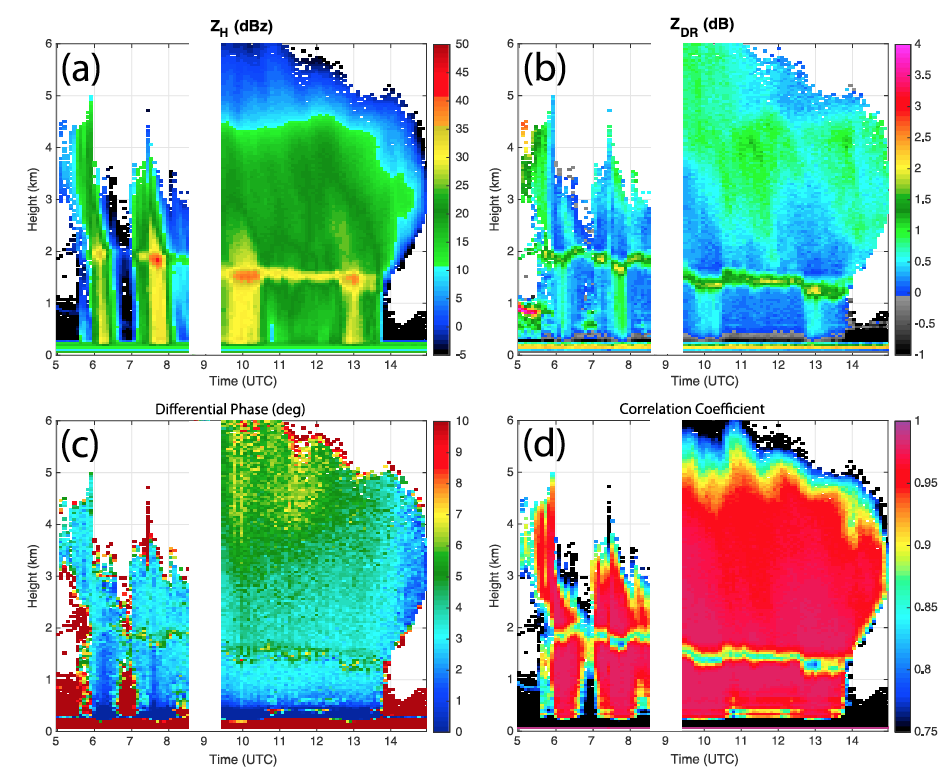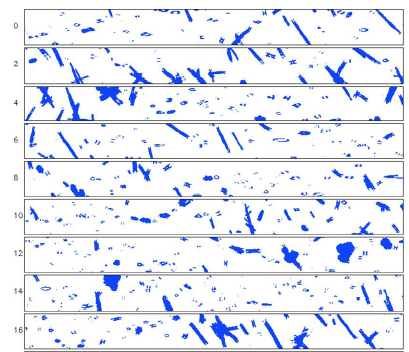Saggy bright bands
Submitter:
Kumjian, Matthew — Pennsylvania State University
Area of research:
Cloud Processes
Journal Reference:
Science
A new technique for viewing radar observations allows for analyzing the evolution of the melting layer “bright band,” a signature associated with melting snowflakes. Radar and aircraft data demonstrate that transient bright band sagging provides information about the ice particles falling into the layer from above.
Impact
Bright band sagging is associated with fast-falling, denser particles entering the melting layer. In some cases, this is related to heavy riming, indirectly indicating the presence of supercooled liquid water.
Summary
Combined dual-polarization radar and aircraft observations from the Midlatitude Continental Convective Clouds Experiment (MC3E) are used to investigate the melting layer in stratiform precipitation. A new radar technique is applied that provides time-height depictions of bright band evolution. Transient bright band sagging is found to occur when denser hydrometeors fall into the melting layer from above. In one case, the particle densification is caused by riming, as evidenced by supercooled liquid water detection and large quantities of needle-like ice crystals thought to be formed by rime splintering (secondary ice production). A simplified bin microphysical model is used to reproduce the signature, showing that increased particle fall speeds are the primary driver of bright band sagging, with increased precipitation intensity as a secondary factor. Scanning dual-polarization radar observations are capable of detecting these processes, potentially allowing for real-time detection of in-cloud icing conditions.



